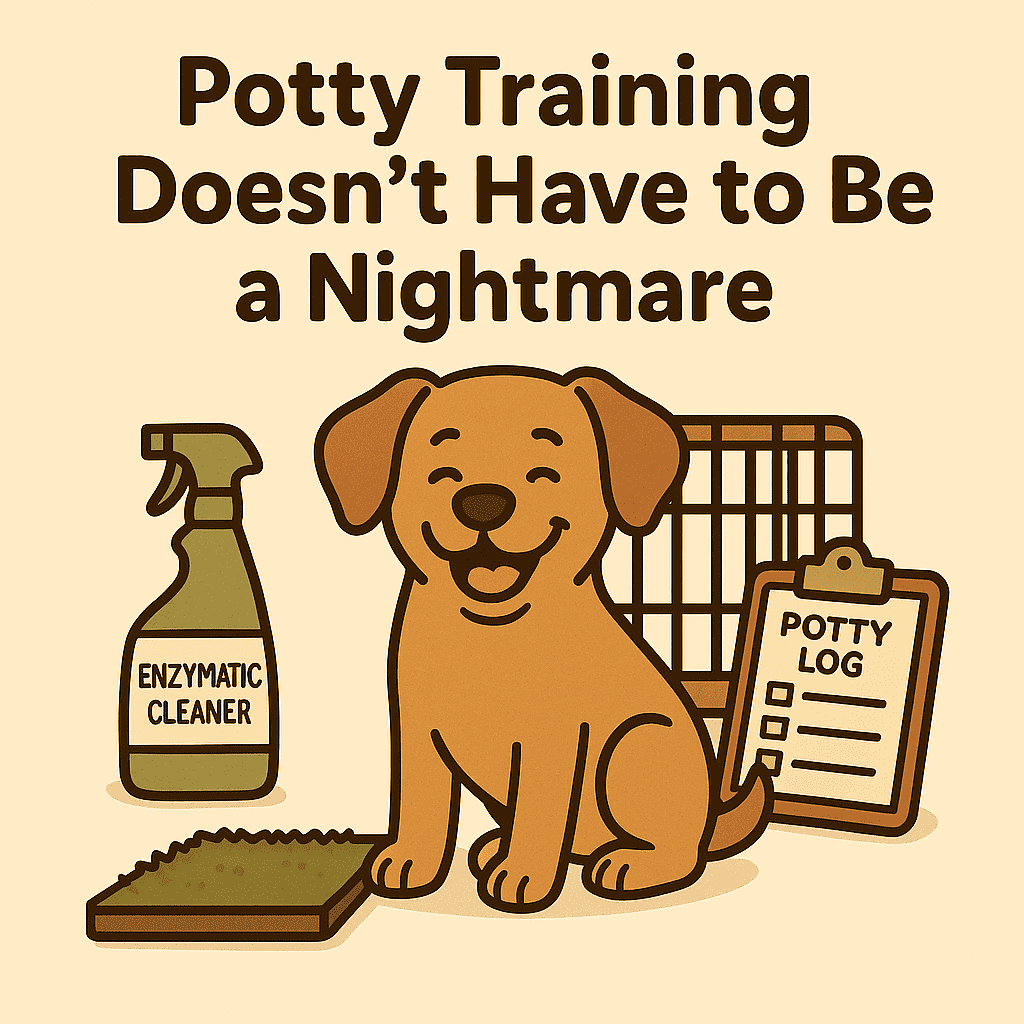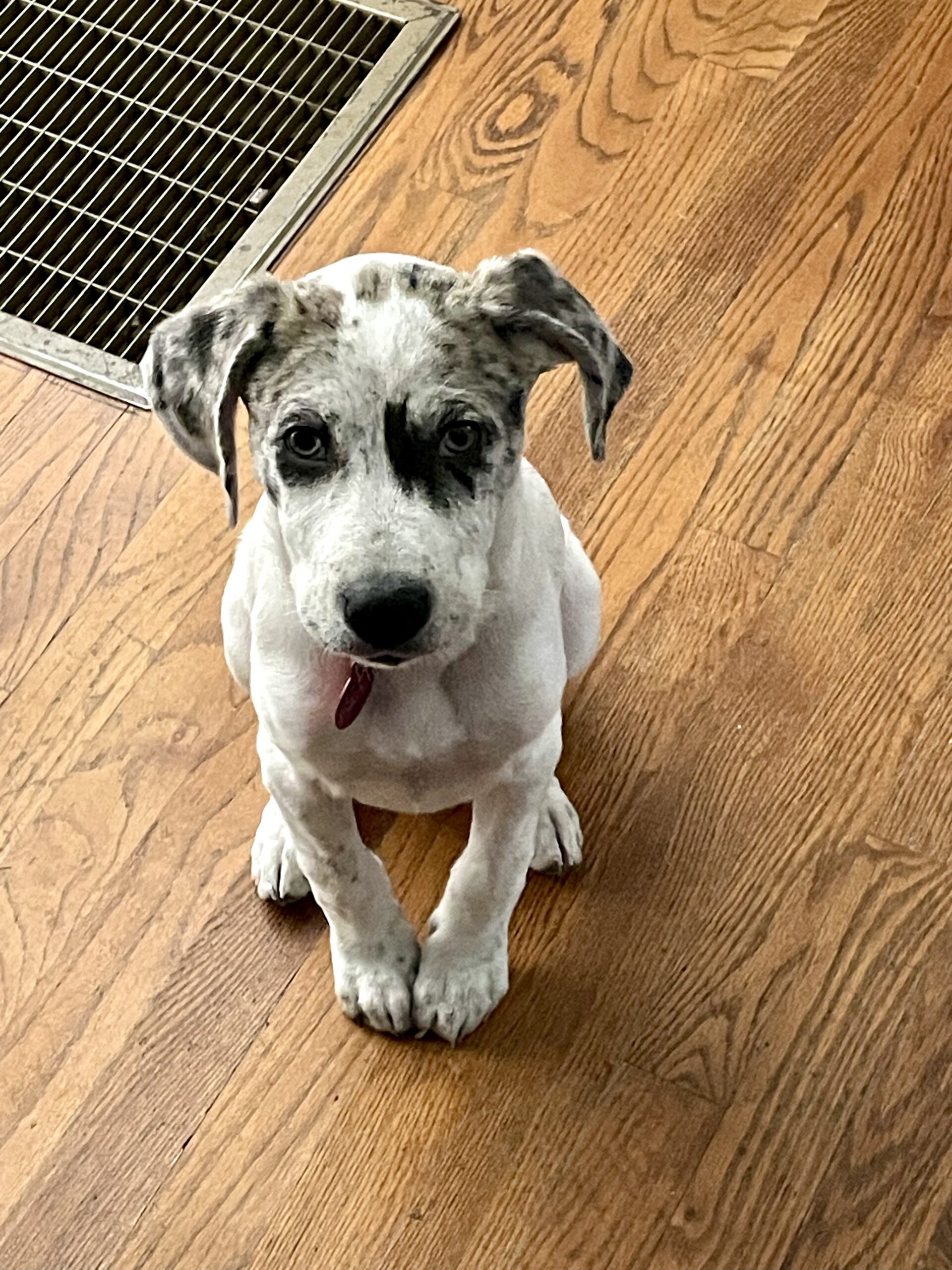How to Train a Puppy to Pee and Poop Outside

Let’s be real—if your puppy isn’t potty trained, your life is a disaster. You wake up in the middle of the night to a smell that makes you question every decision that led to getting a dog. You step in a wet spot on the carpet, but you don’t know if it’s water or urine—until the smell confirms your worst fear. You turn your back for one second, and your brand-new rug is now a biohazard zone. Sound familiar?
You didn’t sign up for this. You love your puppy, but the accidents, the stress, and the constant cleaning are making you question everything. But there’s good news. You can fix this—fast. You just need a system that works. This guide will show you exactly how to eliminate accidents, train your puppy to pee and poop outside, and reclaim your home.
FAVORITE POTTY TRAINING BOOK ->
Step-by-Step Potty Training Guide
1. Establish a Routine (The Non-Negotiable Step)
Dogs are creatures of habit. If you don’t control their schedule, they’ll control yours—with accidents. Here’s how to set up a foolproof routine:
- Take your puppy outside first thing in the morning, after meals, after naps, and before bed.
- Puppies need to go every 1-2 hours, depending on their age.
- Always use the same door to exit for potty time—this helps reinforce the habit.
- Set reminders or use a potty tracking app to stay consistent.
📌 Pro Tip: Young puppies have small bladders! A 2-month-old puppy may only hold it for 2 hours max.
2. Pick a Designated Potty Spot (Make It a Habit)
If you let your puppy pee anywhere, they’ll pee everywhere. Picking a specific potty spot helps them recognize where they should go.
- Take them to the same area every time.
- Their scent will reinforce the habit.
- Avoid switching locations frequently—it confuses them.
📌 Pro Tip: Take them on a leash to prevent distractions. Puppies love to explore, but potty time should be focused!
3. Supervise and Ensure They Go (No More Guesswork)
Thinking your puppy went potty just because they were outside is a rookie mistake. Puppies get distracted easily and forget to go.
✔ Stay outside with them—don’t let them back in too quickly. ✔ Use a leash to keep them focused. ✔ Wait 5-10 minutes—if they don’t go, bring them inside and try again in 15-20 minutes.
📌 Pro Tip: If they don’t go, avoid giving them free rein indoors—keep them in a small area or crate and try again soon.
4. Use a Potty Command (Train Them to Go on Cue)
Dogs can learn words associated with actions, so using a consistent potty command speeds up training.
- Choose a phrase like “Go potty” or “Do your business.”
- Say it every time they go outside.
- Over time, they’ll understand what you’re asking them to do.
📌 Pro Tip: Be patient—don’t repeat the command too many times in a row, or they might tune it out.

5. Reward Good Behavior (Reinforce Positive Habits)
Puppies don’t speak English, but they do understand immediate rewards.
When they finish peeing or pooping outside, reward them with: ✔ Excited praise – “Good job!” ✔ A small treat – Immediate rewards work best! ✔ Playtime or a short walk – This teaches them that pottying leads to fun!
📌 Pro Tip: Never punish accidents—it only causes fear and may make them hide when they need to go.
6. Watch for Potty Signals (Recognize the Warning Signs)
Your puppy will give signals when they need to go outside—learning to recognize them prevents accidents.
🚨 Signs your puppy needs to potty: ✔ Sniffing the ground ✔ Circling or pacing ✔ Whining or standing by the door ✔ Sudden restlessness
📌 Pro Tip: If you see these signs, take them outside immediately! Don’t wait, or you might have an accident.
7. Crate Training (A Game-Changer for Potty Training)
Crates help puppies learn to hold their bladder because dogs don’t like to soil their sleeping area.
- Use a crate that’s just big enough for them to stand and turn around—too much space may encourage accidents.
- Take them outside immediately after letting them out of the crate.
- Don’t leave them crated for too long—puppies have small bladders!
📌 Pro Tip: Crate training works best when paired with a strict potty schedule.
8. Handling Nighttime Potty Training (Stop Midnight Accidents)
Young puppies can’t hold their bladder all night. Here’s how to avoid nighttime messes:
✔ Take them out right before bed. ✔ Set an alarm for 1-2 nighttime potty breaks. ✔ Gradually extend the time between breaks as they get older.
📌 Pro Tip: Don’t play with them at night—keep it all business so they go back to sleep!
Why a Potty Training Book Can Fix Your Puppy Problems—FAST
If you’re struggling with potty training your puppy, you already know the pain and frustration of constant accidents, endless cleaning, and that awful moment when you step in something unexpected. 😩 But here’s the good news—you don’t have to live like this.
This is my go-to comprehensive potty training Book which gives you:
✅ Instant Access to a Proven System – No more Googling conflicting advice. Get a step-by-step blueprint that actually works.
✅ Faster Results – Cut the training time in half by following a structured plan that eliminates confusion.
✅ Avoid Costly Mistakes – Learn what not to do so you don’t accidentally make potty training harder for yourself.
✅ Troubleshooting Help – Stuck on a stubborn puppy who won’t go outside? The eBook has expert solutions for every challenge.
✅ Less Stress, More Sanity – Say goodbye to frustration and get back to enjoying your puppy instead of constantly cleaning up after them.
Troubleshooting Common Potty Training Problems
❌ What if my puppy keeps having accidents? ✔ Go back to a stricter schedule. ✔ Supervise them closely. ✔ Make sure you’re rewarding them for going outside.
❌ What if my puppy doesn’t go outside? ✔ Stay outside longer (at least 10 minutes). ✔ Reduce distractions (keep them on a leash). ✔ Try again in 15-20 minutes if they don’t go.
❌ What if my puppy refuses to go in bad weather? ✔ Use a covered area if possible. ✔ Take them to a familiar potty spot. ✔ Consider a dog raincoat or boots if they hate getting wet.
Final Thoughts: Fix the Problem, Fix Your Life
Potty training isn’t just about teaching your dog—it’s about taking back control of your home.
✔ Stick to a routine ✔ Reward good behavior ✔ Watch for potty signals ✔ Be consistent and patient
Before you know it, your puppy will be fully house-trained and your home will finally stop smelling like regret. 🎉🐶
👉 Need an extra potty training hack? Check out my favorite solution here!

